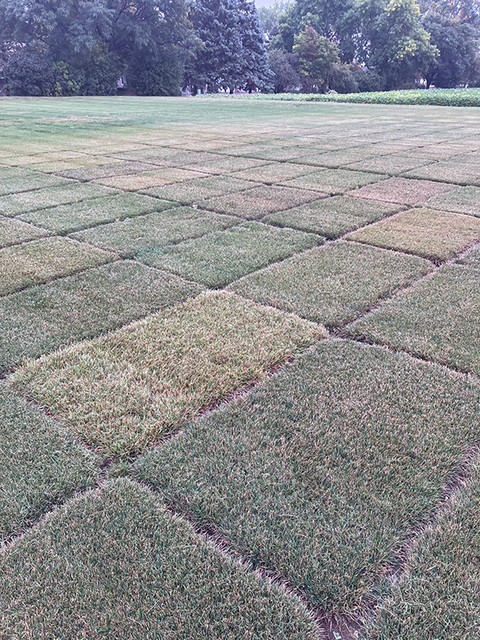Extended periods of high temperatures are often the cause of poor summer turfgrass performance. Normally, this heat stress is combined with drought. So far this year, above-average rainfall combined with high temperatures means turf is experiencing multiple threats.
Less grass = More weeds
Several years of drought left thin turf stands and abundant dormant annual weed seeds. As a result, this spring there was less competition from turf for light, moisture and space, which encouraged weed invasions. Plus, the window for pre-emergent application was small due to the warmer spring.
The combination of high temperatures and waterlogged soil stressed many lawns, making for a tough spring for weed prevention.
Diseases abound
Higher moisture generally means more disease pressure as fungal diseases prefer these conditions. Higher moisture combined with higher temperatures favors many warm-season diseases like pythium, rust, dollar spot, leaf spots, and brown patch. These diseases normally depend on the growing conditions of the lawn and how it is managed.
Excessive nitrogen from fertilizer can promote some diseases like pythium and brown patch. Consider reducing nitrogen rates in future fertilizer applications. Other diseases like rust and dollar spot prefer low-nitrogen environments.
Wait to fertilize
Although lawns with one or more of these diseases could benefit from nitrogen, July is not the time of year to do it. Encouraging the plant to grow from supplemental fertilizer could lead to other problems like excessive growth.
Reducing other stresses this summer is the best way to help your lawn grow out of damage from disease until cooler temperatures arrive in September. In most cases, summertime diseases on home lawns will not result in the death of the lawn and do not require fungicide applications.
Don't worry about yellow, irregular turf
In some instances, higher temperatures following heavy rainfall can cause etiolation. Etiolation refers to yellow or chlorotic turf that appears to have irregular and elongated growth and is often confused with a disease. This is caused by the turf growing too quickly for it to complete its normal physiological functions. It is nearly always non-threatening as the plants will either slow their growth if the high temperatures remain, or growth will resume normally if temperatures lower.
More questions?
If affected areas in your lawn are increasing rapidly or the majority of the lawn is affected by the apparent disease, consider contacting a lawn care professional or submit a question through Ask a Master Gardener.


